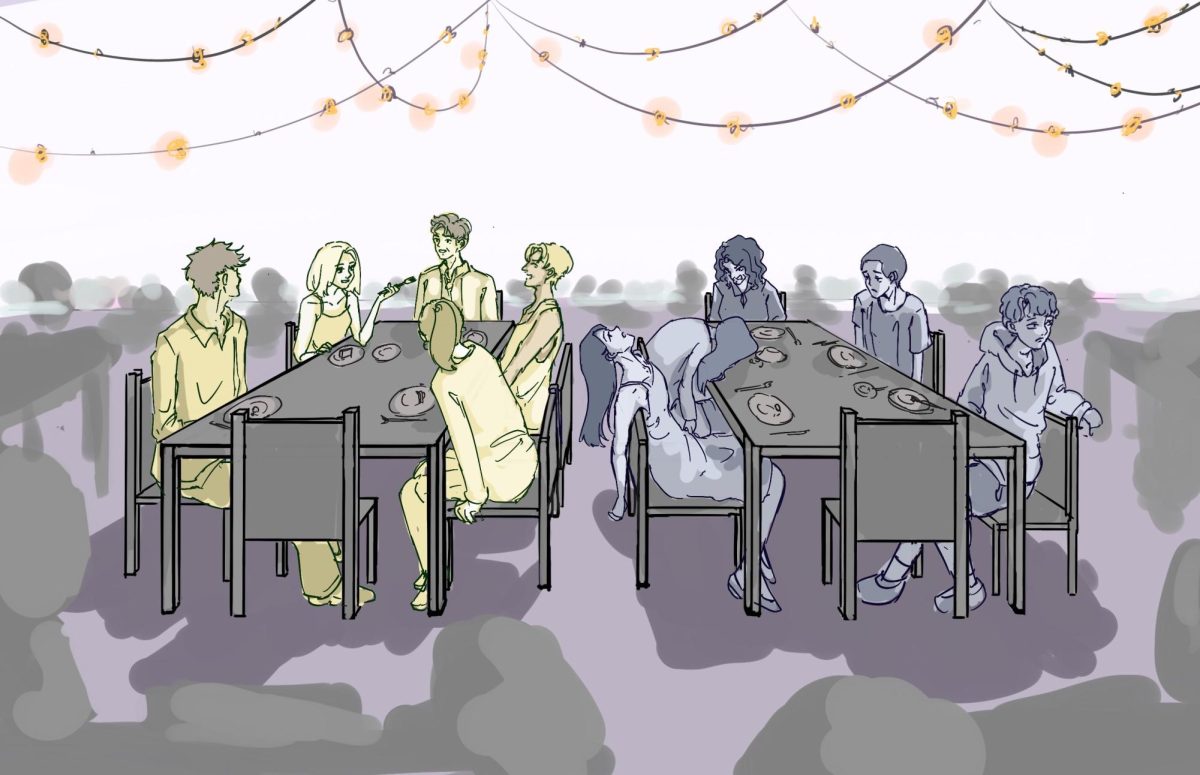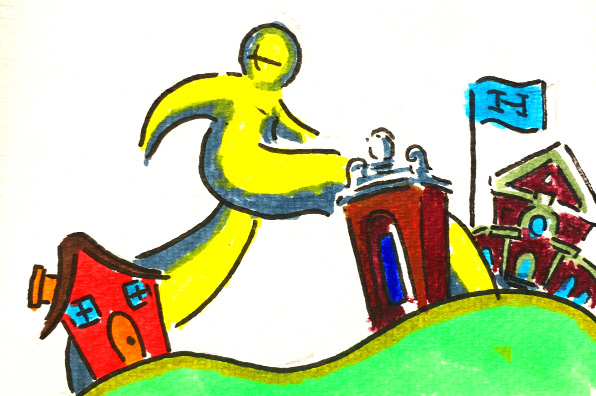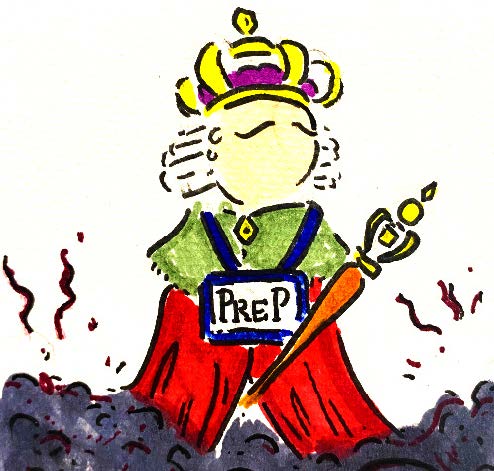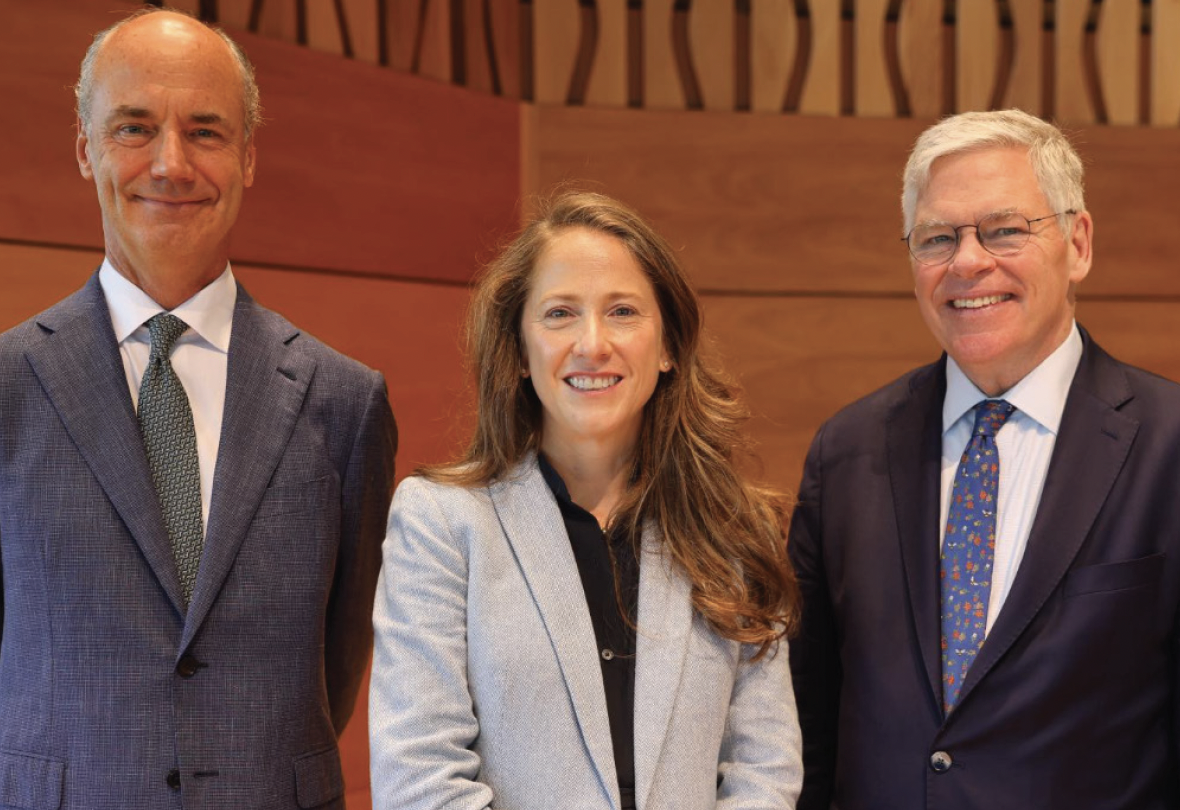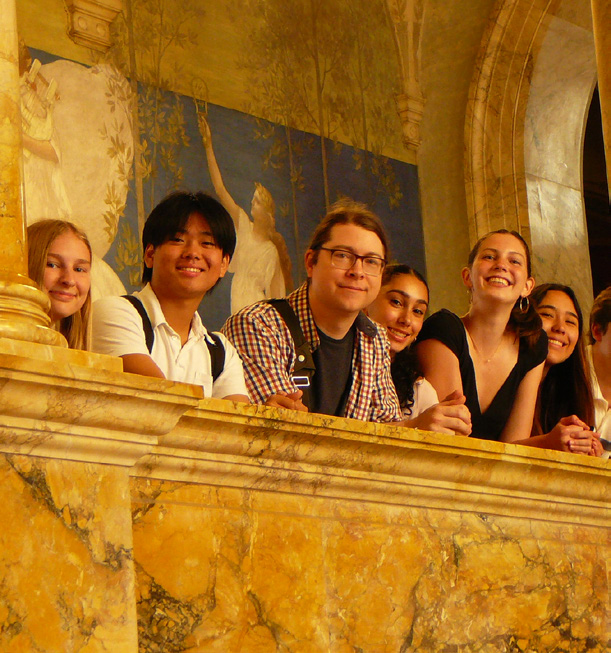Sofia Clark ’27
Our school prides itself on being intentionally diverse and community-driven— and our dining experiences shouldn’t be any different. Community lunches support relationships and socialization in a time where it is ever easier to retreat into our shells. Moreover, they serve as less time-consuming replacement for the community dinners that many alums recall fondly.
Despite grumblings by students about the “annoying” and “inconvenient” nature of community lunches, these complaints hardly represent the majority. Charlie O’Connell ’27 said, “My community lunch provided me with a reprieve in a busy week. I could let go of stressors and enjoy the moment.”
Charlie’s sentiments touch on what I believe to be a deeply regrettable aspect of our school; that is, our unwavering (and occasionally toxic) focus on academics. In my admittedly brief survey of student opinion, one of the most frequent frustrations I heard was that these lunches took valuable time away from studying.
While our collective dedication to scholarship is admirable, I can’t help but feel that our anxiety over missing 45 minutes of study time nine times a year displays either a lack of time management or a toxic relationship with work in which we prioritize studying over basic sustenance and a chance to connect with other members of our community.
How is it possible for us to wish for a strong community and traditions, but not to pick the low-hanging fruit that promotes our shared values and ideals?
It is clear that without embracing opportunities like community lunches, we will miss out on meaningful chances to connect with one another.
In a recent all-school meeting, members of Blue & White emphasized the importance of participating in traditions. The desire for communal tradition seems to be a popular sentiment among students, which is why I believe these monthly lunches should be celebrated with the same gusto we use to greet other important bonding customs (e.g., orientation!).
Although tradition is not a sufficient reason for continuing seated meals, when taken in conjunction with the importance of building positive community, a strong case can certainly be made for these meals.
Personally, my experiences at community lunches have made a positive impact on my life. I met people in other grades I hadn’t spoken to before, learned more about people I already knew, and started conversations that lasted much longer than the lunch itself.
As Sia Reddy ’26 said, “While we were quiet at first, my group was able to visibly build a stronger understanding of each other and what connects us throughout the lunch.”
The opportunity to connect with others, even in an organized setting, is important. Of course, some might argue that the environment is artificial. To that, I say, regardless of the context, it is still possible to forge connections with individual desire and effort.
Saying that relationships are insincere purely because they were created in a school-sanctioned setting is a cheap excuse for not branching out. If such logic were true, then friendships formed at any school event could be similarly labeled as artificial.
These lunches can be as good or as bad as we want them to be. Their existence is simply an opportunity—it’s students themselves who will dictate the effect these events have on our community.
In time, most—if not all—of us will realize the importance of these lunches. They remind us of what is truly important: basic human connection.
And although academic success is important, I leave you with one final question. Twenty years from now, what would you rather remember: studying alone in your room or getting to know all the amazing people around you?
Annabelle Chu ’28
As your stomach growls, you listen to your teacher wrap up class with a dead expression on your face. When the bell rings, you want to burst into song. But then your teacher says, “Remember, it’s community lunch today!” Your urge to sing vanishes.
Let’s address the elephant in the room: no one wants to be at community lunch. Even though it’s only Monday, people are already drowning under mountains of work.
At Hotchkiss, lunch is more than just a chance to eat; it is 45 precious minutes of freedom. It’s one of the only times in the day when people can choose what they want to do, whether it be burning stir-fry with friends, studying for an important test, or eating ramen quietly in their room. These glorious minutes should not have been commandeered for community lunch.
Mr. Bradley wrote that community lunch is “designed to foster connections among students and adults.” While relationships are important, community lunch isn’t the proper way to develop them.
Three factors are necessary for a successful relationship to form and last. Proximity is the first, because it’s simply easier to become close to someone you see often. With proximity, opportunities to know people better will naturally emerge.
Adding a second factor—similarity—enhances the chance that proximity will lead to a relationship. Psychologically, we find comfort in someone with similar characteristics or qualities. Conversation flows more easily with someone you share similar interests with compared with someone who despises said interests.
However, all of the above will fail to create relationships without authenticity. More simply put, a connection that is formed naturally is going to be more meaningful than a connection that is forced. In my first week, having an orientation group to eat lunch with made me feel no less lonely. And while orientation group friendships fade over time, your most meaningful connections are going to be the ones built naturally in dorms, classes, sports, and clubs.
Everything about community lunch is artificial. Students and adults are asked to connect at a required event they don’t want to attend. At lunchtime, no one has the energy, time, or motivation to share anything beyond their year and dorm, much less conenct with someone new.
Randomized seating means you might be at a table with a teacher who teaches your favorite subject and four cheerful students who likes the same singer as you; or, in the more likely scenario, with five tired people you’ve never even seen around campus, four of whom are shoveling Lucky Charms into their mouths as fast as possible.
I could echo complaints from other students and faculty about the length of the queue, the limited food options, and the “my-double-lunch-turned-into-one” dilemma. But the real problem with community lunches is how unlikely they are to create genuine connections.
So, what can the school do to truly foster connection and community? And should the school administration be stepping in to help build relationships at all?
The first question is easier to answer. Instead of hosting mandatory community meals during school hours, we should have voluntary events instead. Though some argue this defeats the purpose, having people who don’t want to be at events doesn’t help socialization. So, make community events optional and add a little incentive—maybe dessert nights with free cookies. Trust that out of hundreds students, there will be some who are genuinely interested in meeting new people.
As for the second question, there’s a difference between the administration creating opportunities to help students socialize and deciding that the best way to socialize is forcing people to watch each other eat uncomfortably. The school should let students have more say in future community events, because their success is ultimately dependent on student buy-in.
In the end, the friends you’re going to cry with at graduation are the ones you find in the midst of your everyday life. Community lunches are unlikely to produce those connections. Instead, join a club, help a struggling classmate, or just say hi to a person you find cool. You’ll meet your people that way.

